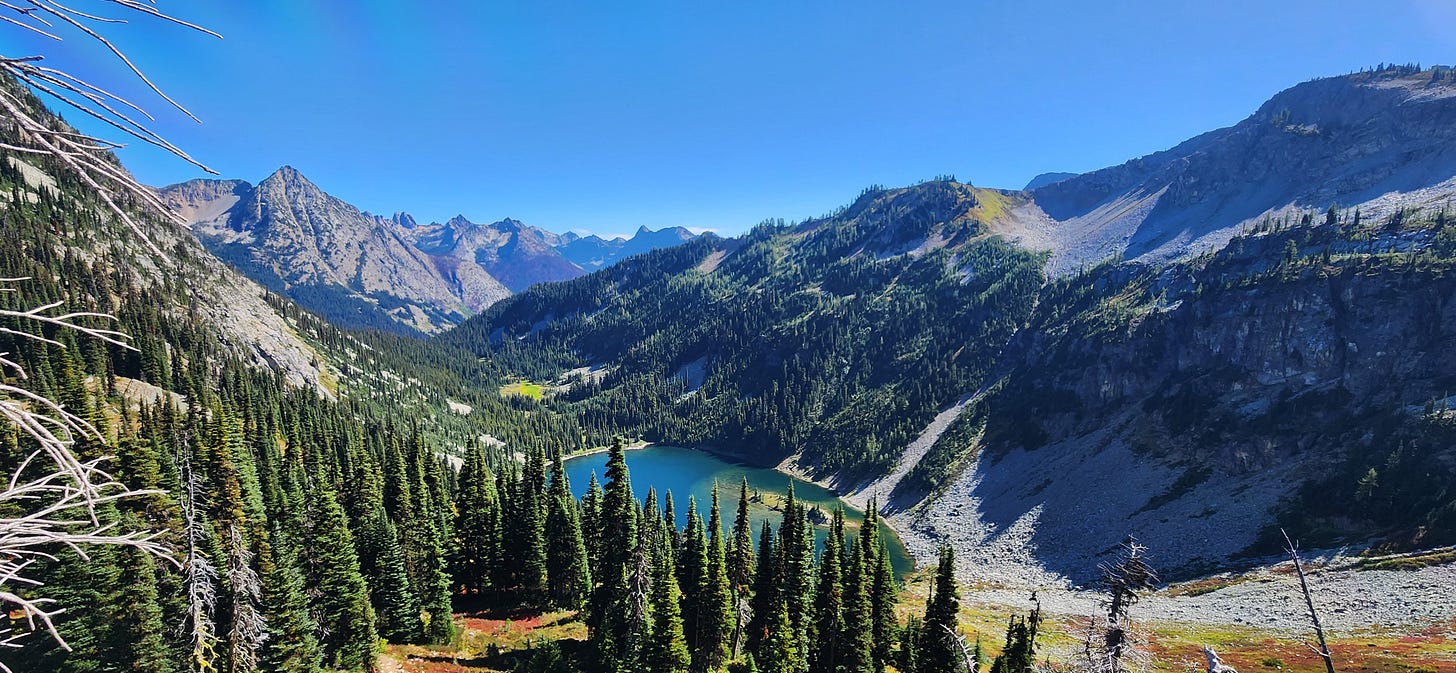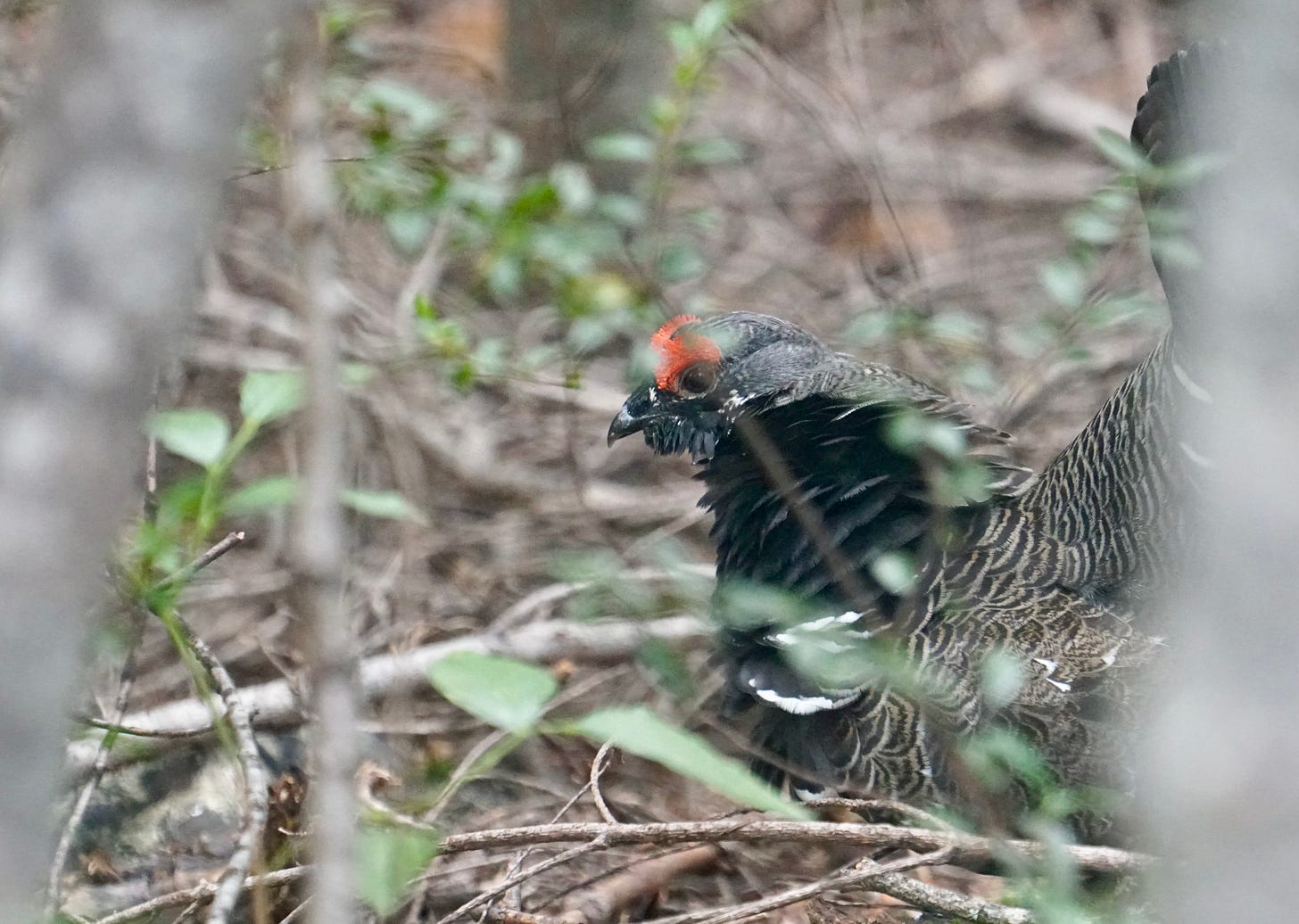What to say about Washington? Where do you begin? Culturally, it is a mixture of dyed-in-the-tie liberals, politically agnostic middle-of-the-roaders and tragically unloved orangeman supporters. Even in the socially bubbled towns, you are never far from an opposite opinion. This is the way it should be, though I readily admit that today’s discourse feels heavily lopsided; the volleying of political opinion is no longer a five-set, down to the last serve match; current political debate spectates more like Navratilova in her prime taking on a kindergartener with a peanut brain and no arms. That all aside, whatever Washingtonians believe, here people live openly, and what gives this state such diversity in thought is mirrored by its diversity in landscape.
The Eastern lands, flattened and rippled by intense Pleistocene ice age flooding, are now covered by farm and range, the convergence of the Snake River and the mighty Columbia used for much of the state's agribusiness. People here keep to the land; here people get around in large trucks, some necessary as farm vehicles, some necessary only for playing the part of an antiquated vision of manhood. There is hoarded money here, but, in general, people do not live high on any hog. To seek economic wealth, head to the state’s coast, home to the large hold on Washington's money. Some hippy folks got to coast at the right time and continue to ride the wave of a stupid increase in property values; others, hippy or no, just love to love money and seem pretty excited to hungry-hungry-hippo as much of it as they can. The state’s mountainous regions show a population in mixed company: some back-to-the-earth libertarians; some folks squeaking through and eking by in trailer dilapidation; and some thirty-somethings perpetuating boring trends in the name of individualism, their clothes with that specific scent of food coop: papaya extract, pea shoots and sage.
A moderate size of this Moderately Sized Year has been, in between supping on the grandeur and the natural minutiae, inadvertently noting people and how their everydays shapes their everydays. Washington, when it comes to its disparate faces running parallel to its distinct places, truly is a cross section that would take lifetimes to explore. It took us nearly a month to barely scratch the surface.
From Missoula, early September, The Blazer brought us into the east, crossing from Coeur d'Alene and into the Spokane Valley. Having once, long ago, stopped in Spokane, I really didn't recall any reason for a pause, though there is a great record shop, Resurrection Records, should you be into that sort of thing. Our first camp was outside of Grand Coulee at a site just at dam water's edge. The sun dipped beautifully over the blue, huge numbers of California Quail (Callipepla californica) flitted from shrub to shrub, and we texted back and forth with family as the Detroit Lions took their first win of the season. As most of you know, we are not big on cell use, but it is Detroit, and the importance of the Lions for my family, generationally, cannot be properly emphasized.
The Grand Coulee dam is really a public works wonder, and though dams destroy magical habitat in the name of human prosperity, they also create insanely otherworld surrounds. The changing water levels reveal ancient basalt columns and raised buttes, visual stimulants born of harrowing geological happenings. We hiked nearby Northrup Canyon, a nuthatch infested trail passing through once-ranched fields and past some of the aforementioned basalt columns and out to a spruce-ringed lake. The field was a sea of flowers enjoyed by Magillivray's Warblers (Geothlypis tolmiei), and White-crowned Sparrows (Zonotrichia leucophrys); the trees: paradise for those nuthatches and towhees.

From there, a visit to the Methow Valley, where an incredible percentage of our nation’s apples are born. The road follows from orchard to orchard, stacks of wooden crates in oracular towers. Our dear friends, with whom we stayed for a whopping five nights, have a modest property in Winthrop, one of those places with differing neighborly opinions: one house waving proudly (and, to me, quite ignorantly) a confederate flag, because Central Washington played a major role in Civil War politics; another neighbor's Subaru bumper asks us all to help protect transgendered kids. The area is hard to categorize, and though the Methow Valley currently has way more wine shops and art galleries than it needs, it also has a quaintly realistic touch and feels far enough from everything, and near enough to something at the same time. We agreed, if The Blazer decided to give up in The Methow, The Ferry and I would be just fine.
While in Winthrop we spent days casually seeking the flightful. One year-bird surprise: a Sabine’s Gull (Xema sabini), an ocean-going gull that breeds in the Arctic, floating on Pearrygin Lake. The Ferry and I were the first ever to report this bird there, which is understandably fun. Our nights we passed cooking enchiladas and feeling the evening bird chorus erupting around a trampoline busied by a five-year-old Finley’s ability to convince. The tall conifers around the trailer were never empty: Red Crossbills (Loxia curvirostra), Red-breasted Nuthatches (Sitta canadensis), Cassin's Finches (Haemorhous cassinii), woodpeckers, ravens, Yellow-rumped Warblers (Setophaga coronata). Drinking a beer and dining around a picnic table in perfect company, both avian and human.
Departing, reluctantly, we left the scarred flatlands and headed to what most people may think of when they think of Washington State. The Blazer, ever a champion, wended his way fifteen miles up and over pitted and washed forest road. Hart’s Pass Campground at 7,000 ft, just below Slate Peak, is not the place you would want to break down, emotionally or vehicularly. It is cold, very remote and profoundly peaceful. It is also the near terminus for the Pacific Crest Trail, so amidst the peace you definitely encounter thinned hikers with muscled thighs, all smelling understandably rank, and all looking, ununderstandably exactly the same. We spent two nights seeking high altitude creatures, and though we didn’t add any new ones to the year, we did get surrounded by a covey of Dusky Grouse (Dendragapus obscurus) and also kept company with American Pika (Ochotona princeps), the smallest member of the rabbit and hare family, and also the cutest fricken creature on the planet, and Long-tailed Weasel (Neogale frenata), also amazingly cute, particularly if you are not a vole, a pika, a lizard, or a small bird…they are impressively vicious hunters.
Back on the North Cascades Highway, we stopped for a seven-hour hike looping around Maple Pass. We had thought to only walk half the trail, but the weather was supreme, and only a doof would deny oneself the pleasure of a mountain lake on a pristine day. The trail goes from lower road and up onto the saddle bridging two crystalline lakes. At thousands of feet, a flock of migrating robins chirped southwardly, and our first American Goshawk (Accipiter atricapillus), a pair, circled high amongst their preferred elevated forests. We snacked in the sun and let the sparkle of the lake below take us away like a tub full of Calgon.

For our final stretch through the high pass, we camped in North Cascades National Park, just outside a town called Newhalem. This town, carved in between vertiginous rock faces, owes its existence to hydroelectric dam projects, one of which supplies Seattle in all of its electric cool, with a large majority of its power. It is a strange place: all of the buildings are beholden to the company town, Seattle City Light. It has a feel of a lost time, friendly enough, and very much quiet.

From the east and up through the mountains, we had already spent half of September, a long time if you are aiming at a Big Year, but not nearly enough time should you be going it at a moderate pace. As we cruise from the altitude of easy air, Blazer brings us to the lowlands, heading onto yet another varied habitat: The Coast…stay tuned…









Such a pleasure to read your writing!